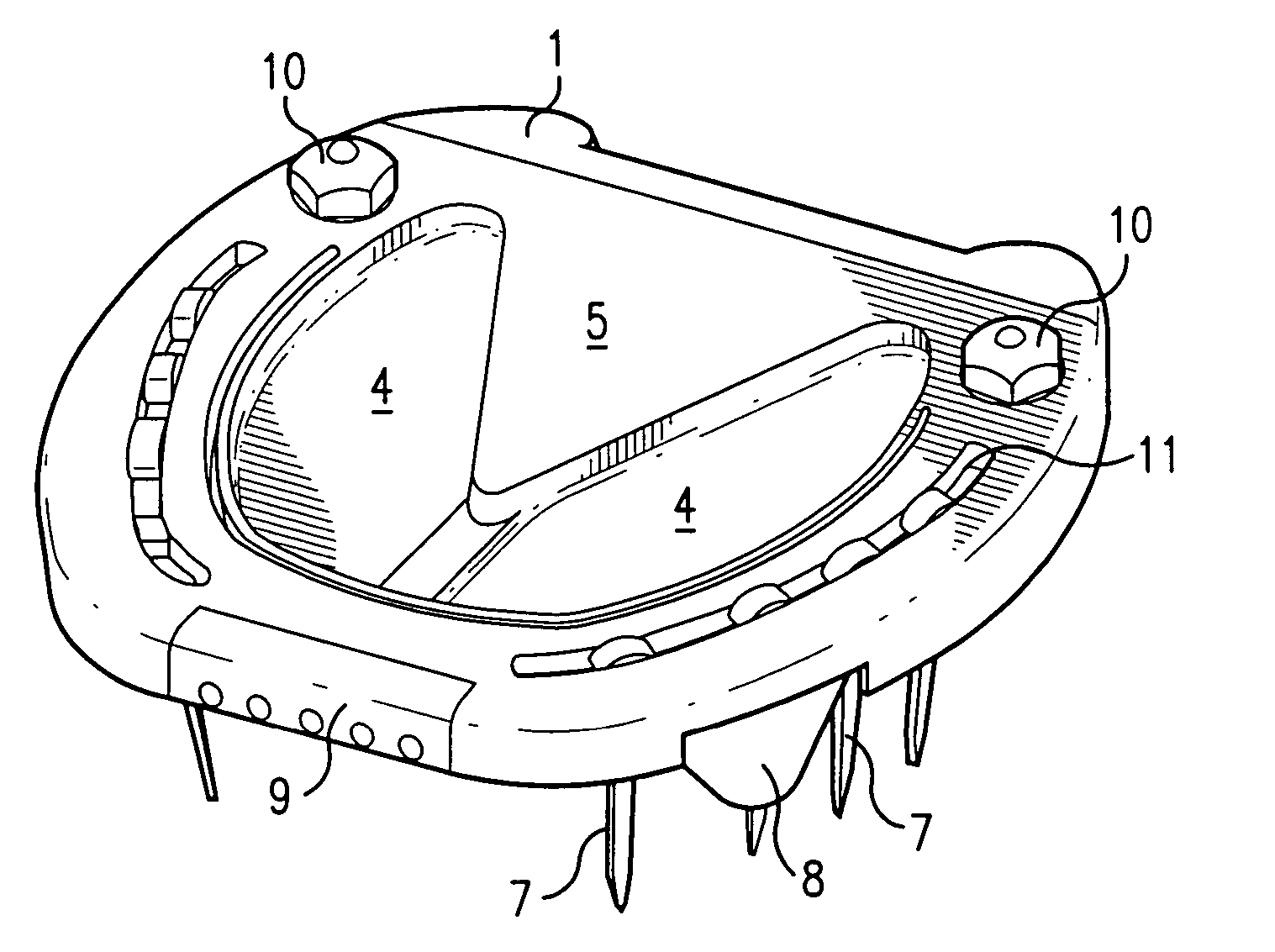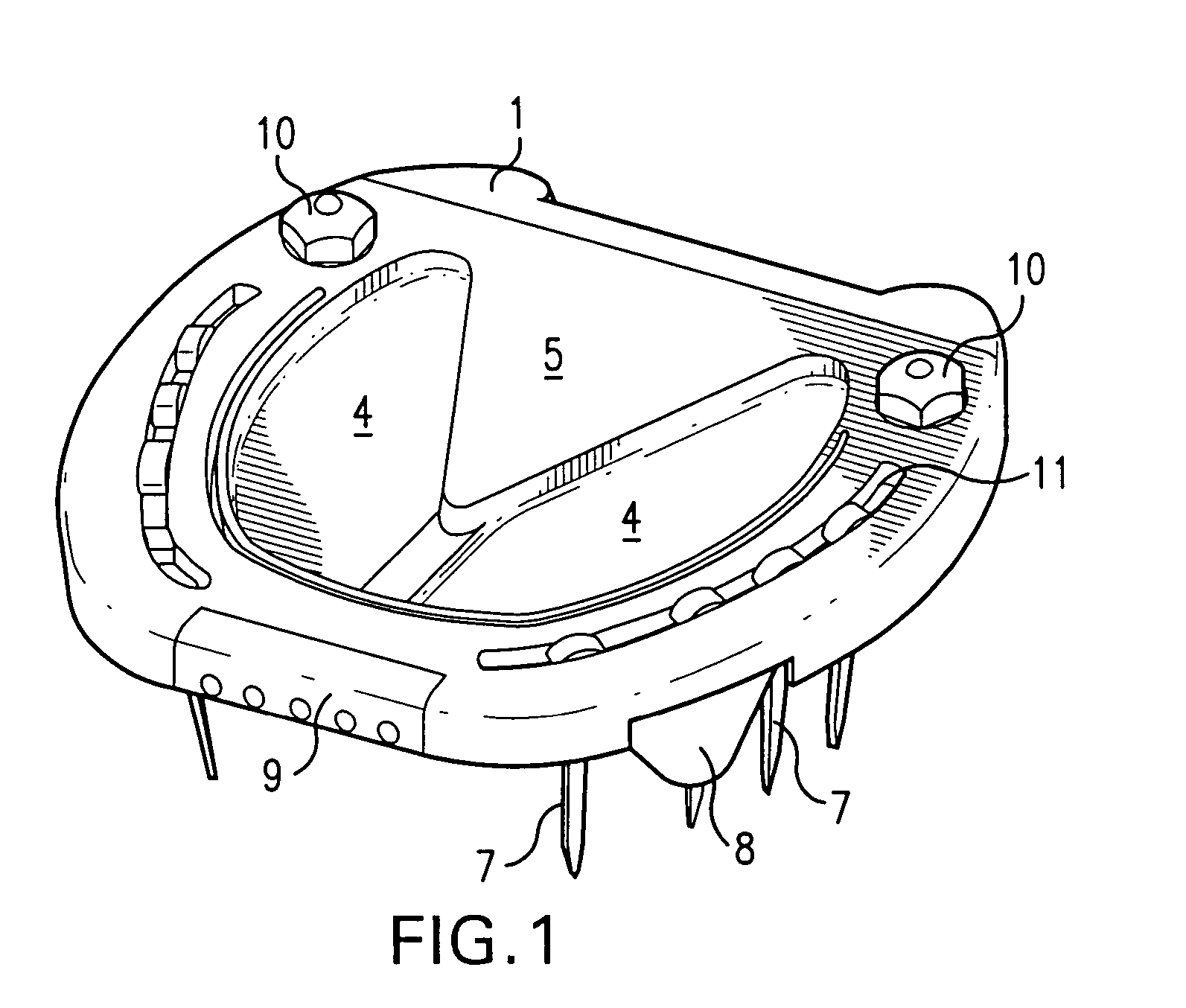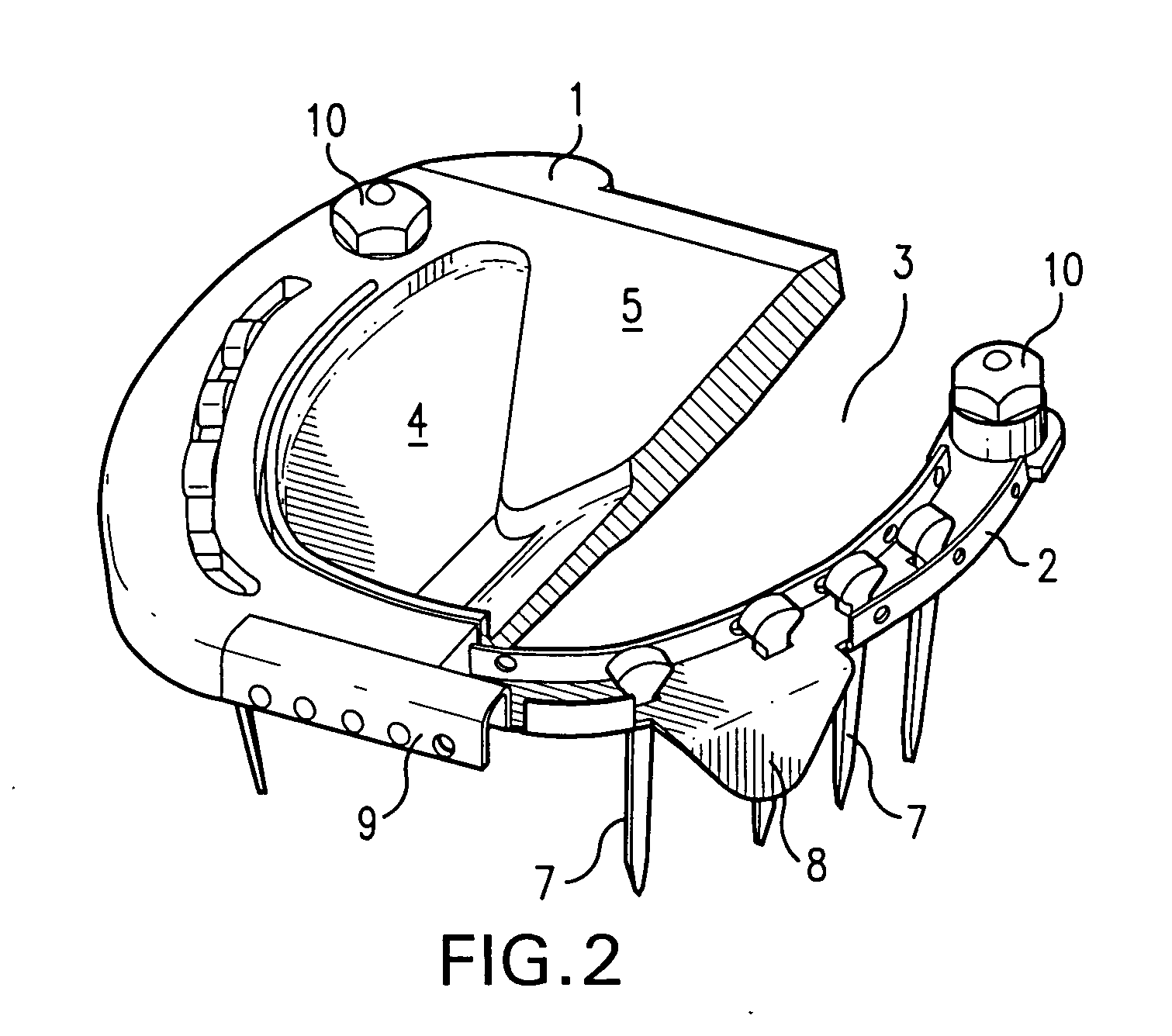Horseshoe
a technology for horses and shoes, applied in the field of horses' shoes, can solve the problems of reducing affecting the natural ability of horses to absorb shock, and imposing the impact force on the hoof of horses, and achieve the effect of reducing or eliminating the need for nails
- Summary
- Abstract
- Description
- Claims
- Application Information
AI Technical Summary
Benefits of technology
Problems solved by technology
Method used
Image
Examples
Embodiment Construction
[0033]FIG. 1 provides a perspective view of the horseshoe of the present invention. FIG. 1 shows the bottom of the horseshoe, i.e. the portion which touches the ground when the shoe is worn. FIG. 2 provides a partially cut-away view, showing the insert.
[0034] The main body 1 of the horseshoe is formed of a moldable plastic or composite material. A resilient insert 2 is embedded in the body. The main body of the insert is completely embedded in the moldable material, and is therefore not visible in FIG. 1, but it is partially visible in the cut-away view of FIG. 2.
[0035] The insert is preferably made of a strong but resilient material. A preferred material is spring steel. In one example, the steel could be about 0.055 inches thick. However, the invention is not limited to the use of a particular material, or to a specific thickness. Many other resilient materials could be used instead. It is preferred that the insert have “memory”, and that it be capable of being held under compre...
PUM
 Login to View More
Login to View More Abstract
Description
Claims
Application Information
 Login to View More
Login to View More - R&D
- Intellectual Property
- Life Sciences
- Materials
- Tech Scout
- Unparalleled Data Quality
- Higher Quality Content
- 60% Fewer Hallucinations
Browse by: Latest US Patents, China's latest patents, Technical Efficacy Thesaurus, Application Domain, Technology Topic, Popular Technical Reports.
© 2025 PatSnap. All rights reserved.Legal|Privacy policy|Modern Slavery Act Transparency Statement|Sitemap|About US| Contact US: help@patsnap.com



